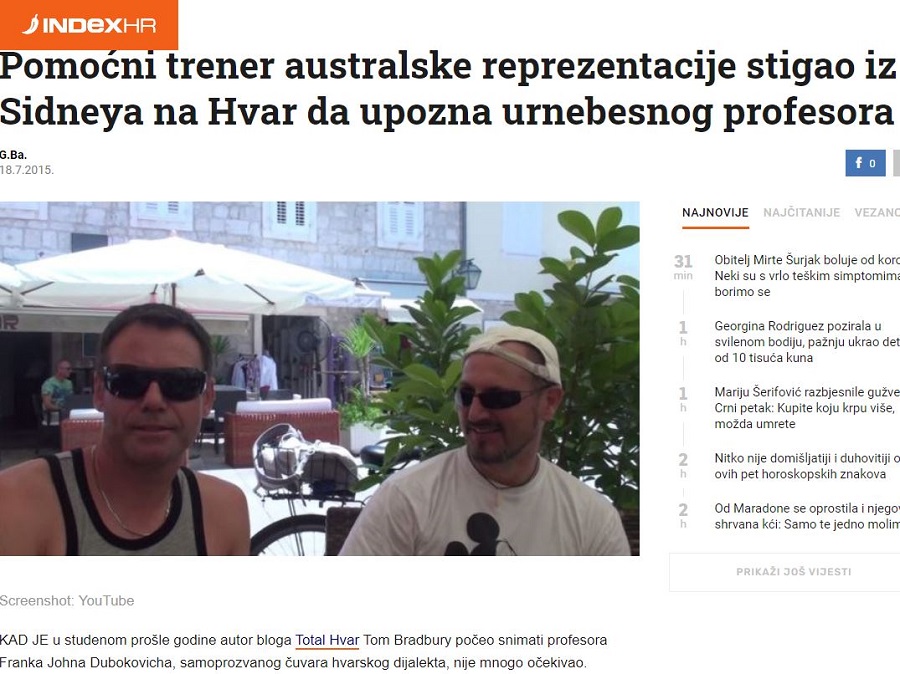Astro Tourism on Hvar: Jelsa To Be First Dark Sky Community in Croatia
December 27, 2020 – In an effort to develop astro tourism on Hvar, a meteor camera and meteorological station were set up in the abandoned settlement of Humac near Jelsa. Jelsa will thus become the first internationally recognized Dark Sky Community in Croatia.
As Turističke priče reports, the Municipality of Jelsa, the Tourist Board of Jelsa, and the Croatian Astronomical Society participate in creating an astro-tourist offer on the island of Hvar.
Meteor camera recorded 125 meteors in the first night
The first activity, public observation with a telescope, was carried out in August. Later, a small school of astronomy was organized for primary school students.
Now the Croatian meteor camera (i.e., the Global Meteorological Network) and the meteorological station on Humac have been completed. The work was quite demanding because first, a pole, solar power supply, and mobile internet had to be installed, then a meteor camera and meteorological station.
The meteor camera recorded 125 meteors on the first night of filming, of which 72 belonged to seven known meteor swarms. The most numerous were meteors from the radiant in Coma Berenices, 12 in total.
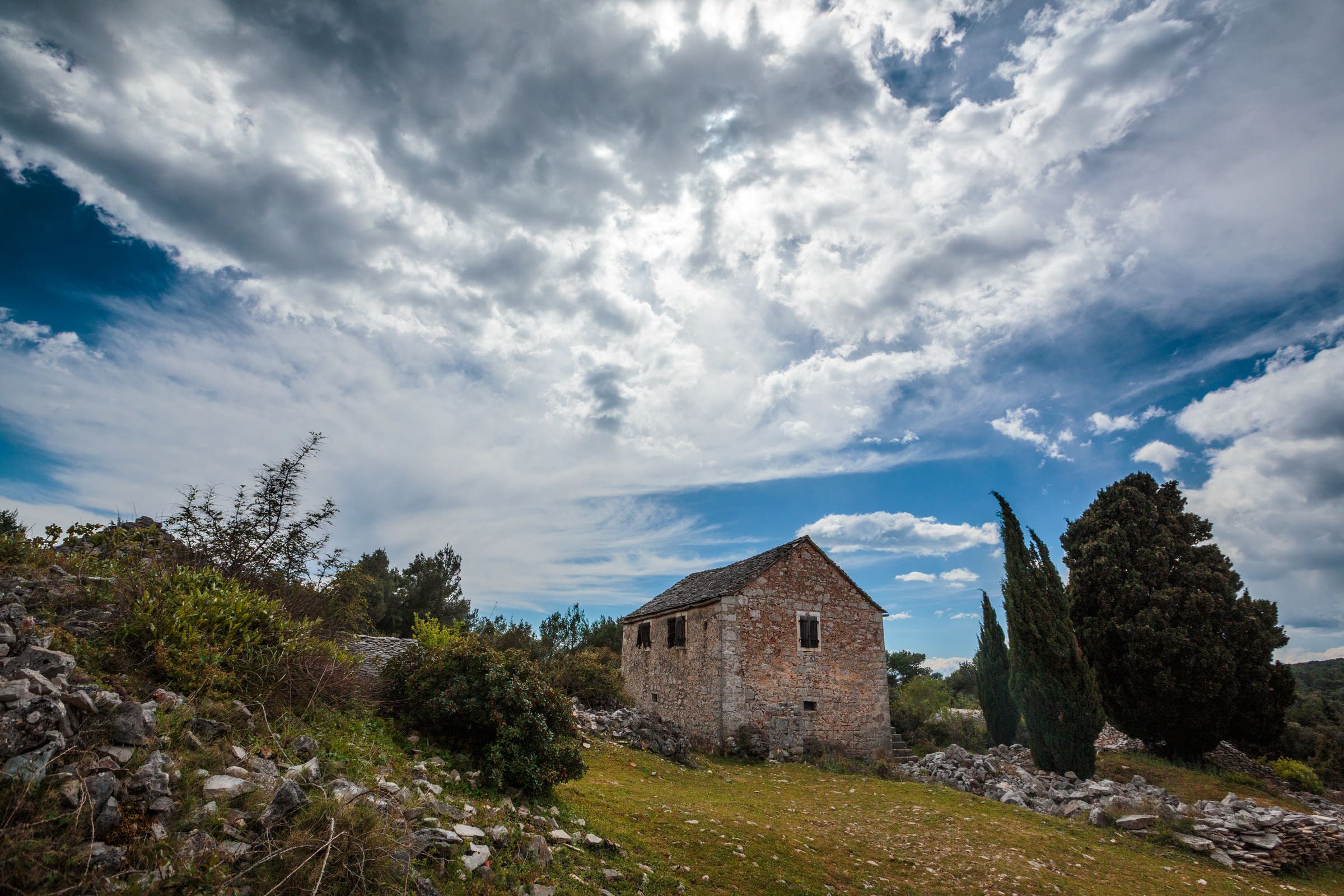
Humac is a former pastoral settlement, founded in the 17th century, located 7 km away from Jelsa, at 350 m above sea level / Photo: Romulić and Stojčić
The meteor camera in Humac can be followed on the pages of the Global Meteor Network, and the meteorological station on the Weather Underground and Weather Cloud services.
Activities are also aimed at declaring the Municipality of Jelsa the first international Dark Sky Community in Croatia and the area of Humac an International Dark Sky Park.
What is Dark Sky Park, and what Dark Sky Community?
The Dark Sky Park label is awarded to protected nature areas with extremely dark skies full of stars. According to the International Dark-Sky Association, an American non-profit organization, parks are spaces protected for natural conservation that implement good outdoor lighting and provide dark sky programs for visitors. The parks also run programs to popularize astronomy, educate the public on light pollution, and actively promote and preserve the night sky for current and future generations.
In Croatia, the first International Dark Sky Park is the one on Petrova Gora. Unfortunately, its future is questionable due to the light pollution caused by the tower with intense lighting, set up at the same location. At the end of last year, Vrani Kamen on Papuk was declared a second International Dark Sky Park. It is expected that the area of Humac near Jelsa on Hvar will be the third Dark Sky Park in Croatia.
Unlike the park, the Dark Sky Community represents a village, town, or municipality that has shown exceptional dedication to preserving the night sky by implementation and enforcement of a quality outdoor lighting ordinance, dark sky education, and citizen support of dark skies. Communities excel in promoting responsible lighting and dark sky stewardship and set good examples for surrounding communities.
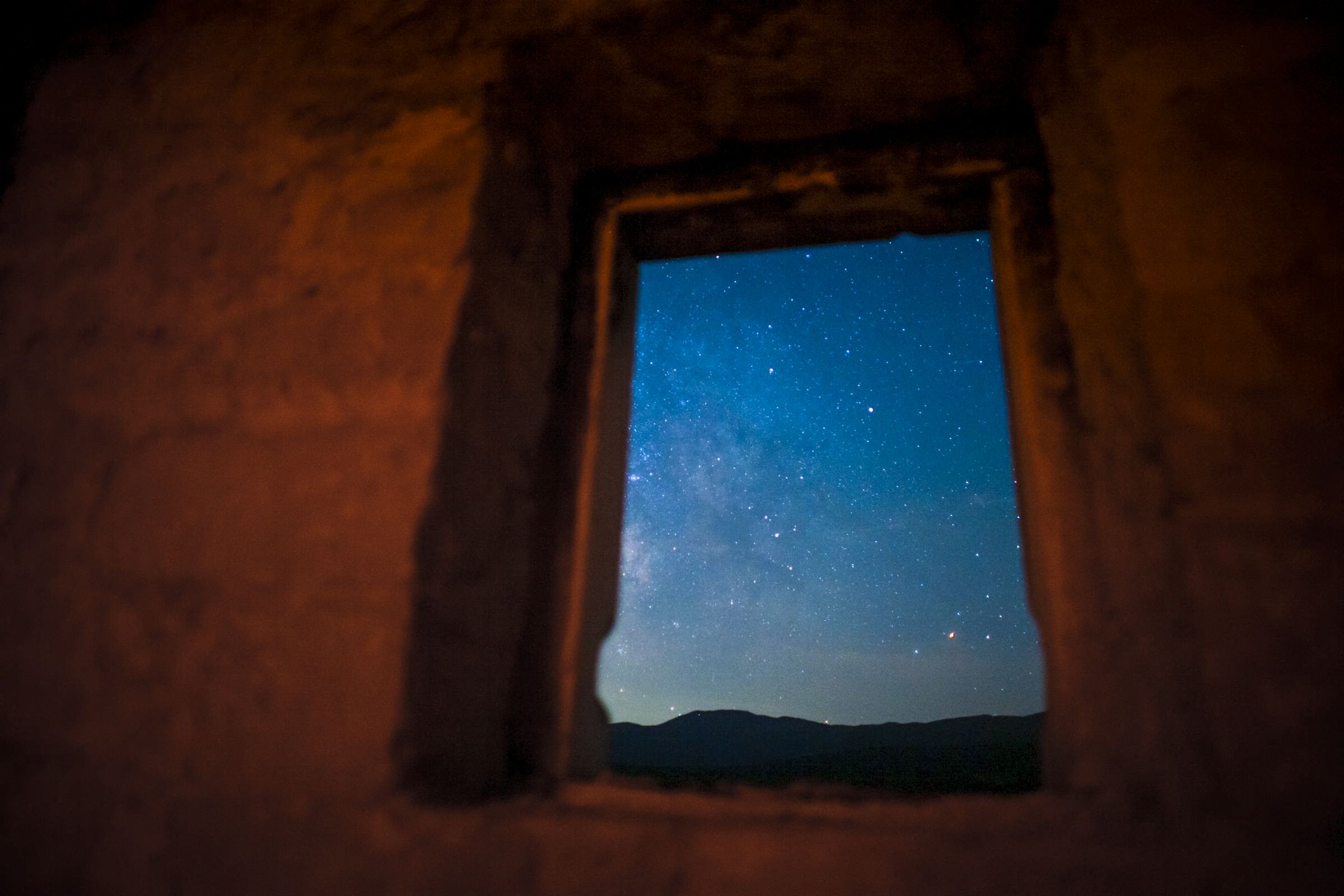
Dark starry Croatian sky / Photo: Romulić and Stojčić
Dark Sky Park as a tourist product?
Astro tourism is not yet developed, but it is one of the fastest-growing branches of tourism.
As HRturizam reports, although it is currently a small global community, dark sky tourism is growing and will only have rapid growth due to the coronavirus pandemic. Lonely Planet, CNN, and many others included dark sky tourism in the upcoming trends back in 2019.
Both Dark Sky Park in Humac and Dark Sky Community in Jelsa are of excellent quality and different tourist products. It is yet to be seen how this story is developed, presented, and sold.
For the latest travel info, bookmark our main travel info article, which is updated daily.
Read the Croatian Travel Update in your language - now available in 24 languages.
Digital Nomad Life in Croatia: Jess and Thibaud, from San Francisco to Jelsa
December 21, 2020- As the number of digital nomads rises globally, some are choosing to spend some of their time in Croatia. Continuing our TCN series meeting international digital nomads calling Croatia their temporary home. Meet Jess and Thibaud, from San Francisco to Jelsa on Hvar.
It has been a very strange year for tourism, but not all of it has been bad news.
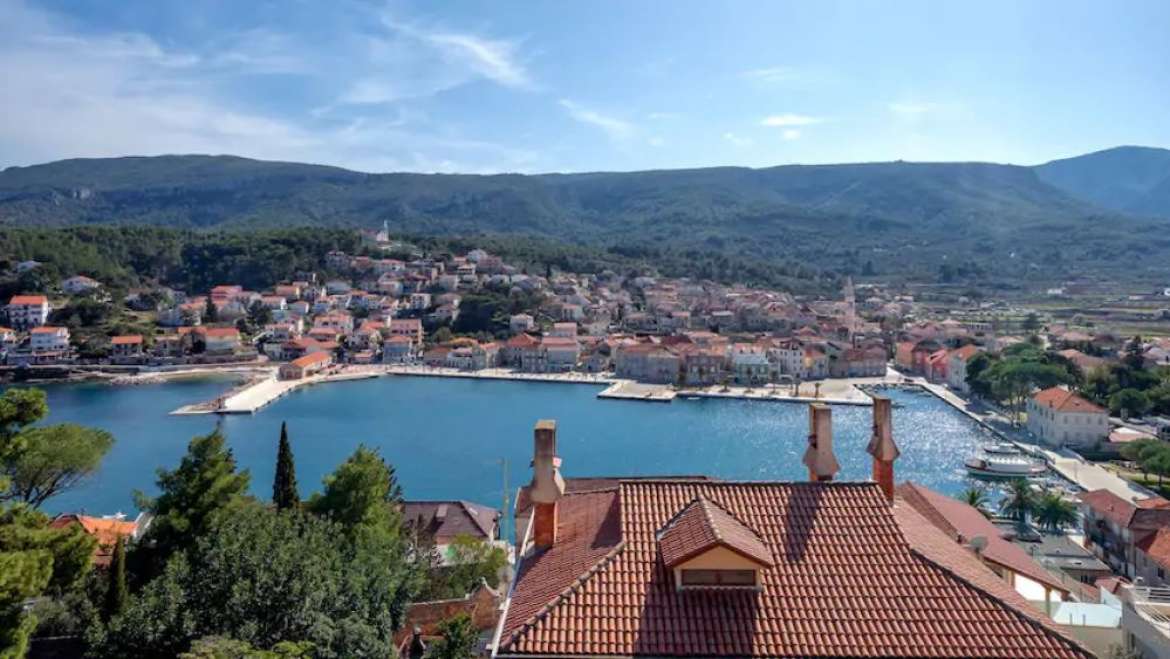
Renting our AirBnB apartment, Panorama Penthouse Jelsa, for example. Who would have imagined this time last year that the apartment would be empty for large parts of the early summer, but then booked solid for the winter months when it is normally empty? And by not one, but two digital nomad couples...
Meet Jess and Thibaud, the latest digital nomads in our series meeting remote workers choosing Croatia. What does San Francisco have that you couldn't possibly find in Jelsa anyway?
Tell us a bit about you and your work.
Thibaud grew up in Paris and has spent most of his life in Northern California. I’m from New York, which is where I lived until we moved to San Francisco a few years ago. We love to travel and spent five months backpacking in Asia in 2018. If I had to describe us in a sentence, I’d say we’re an adventurous pair that likes to live life to the fullest.
We work in the technology sector and have spent the majority of our careers at companies based in Silicon Valley. As a product manager, Thibaud designs and builds digital experiences for software platforms and tools. He sets the strategy and partners with engineering, design and business teams to make that happen. I work in business development, specializing in fintech. My job is to help companies grow and improve their market positions through client/supplier relationships and partnerships. Fun fact: we met at work!

Pros and cons of working remotely?
Some of the more challenging aspects have been exacerbated by the pandemic - for example, the lack of social interaction. During normal times, people are able to meet with friends and family and go about their daily lives outside their homes, which balances the fact that they may not see their colleagues regularly. With the lockdowns, working from shared spaces or cafes isn’t an option, so it can be a bit isolating. Living and working in the place can lead to overworking, so it’s been important for us to set some of the boundaries that exist with non-remote work. Eating meals away from our laptops, keeping to a loose routine, and taking time for movement have been helpful ways to break up the day.
More effort is required to build and maintain relationships with colleagues when working remotely. Information can fall through the cracks without those impromptu desk-side chats in the office and that glass of wine with your teammate at the end of the workday. Remote work requires more mindfulness about how you interact with colleagues and clients.
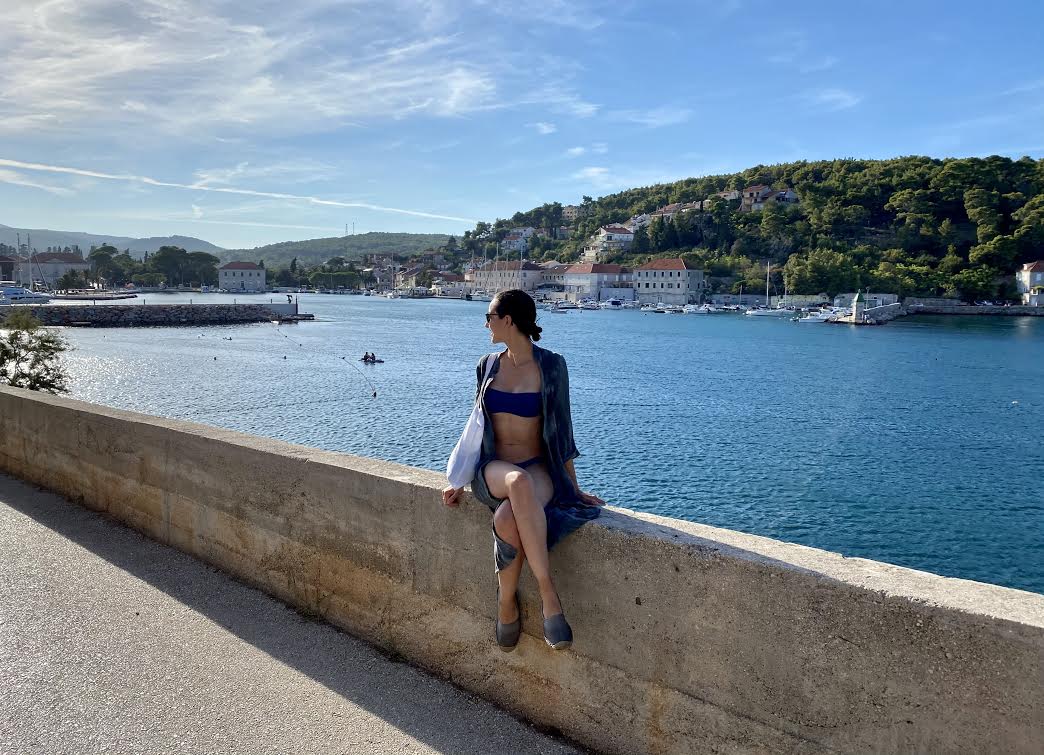
The overall flexibility that remote work enables is the biggest pro. Without it, the term ‘digital nomad’ wouldn’t be a thing! We feel fortunate that our roles can be done remotely, as opposed to many professions that require physical presence. Not being tied down to one location and being able to experience new places is one of the best things about working remotely. Not having to commute is great as it saves time and reduces your carbon footprint. Being able to prepare your own meals is a pro. Having the ability to choose your working setup is a pro, such as taking calls while on a walk or switching rooms to follow the sun. Having the option to wear whatever you’re most comfortable in everyday is also a nice perk.
Remote work also enables companies to hire the best talent regardless of where people live. Being able to build teams across borders can be positive for both employers and employees from an economic perspective and also help drive diversity of thought.
This isn’t an exhaustive list of the pros and cons, but highlights some of the aspects of working from home. For us, the benefits of remote work outweigh the challenges.

How did you choose Croatia and specifically Jelsa?
It was a major decision to travel, let alone temporarily relocate, during Covid-`19. After weighing the risks, we decided to take advantage of our new ability to work remotely. Prior to the pandemic, we had been able to work from home occasionally but not consistently. Many technology companies started to enable employees to work from home full-time in March and we knew that we would not need to return to our offices for several months. We fully embraced the uncertainty of 2020 - we closed our San Francisco lease in June, took a month-long road trip around the western United States, and then took a one-way ticket to Split.
We wanted to spend our time remotely working in Europe and Croatia was one of the few countries open to Americans in August. I had visited Dubrovnik, Hvar and Split a few years ago, so I had some familiarity with Croatia. We chose to avoid big cities, and decided that a smaller town on an island would be a good choice. We searched Hvar and Brač for accommodations and I was excited about this Airbnb in Jelsa, primarily because of the terrace and view. Jelsa turned out to be just the kind of destination we were looking for - quaint, walkable, and charming.
Our original plan was to stay about a month in Croatia and then travel to another European country. But within a few days of arriving, we extended our booking to two months. In October, we considered traveling elsewhere, but decided against it given the rising Covid-19 risk and changing border restrictions. Plus, we were happy in Jelsa and felt settled despite having been there for a short time. We’ve made some incredible friends here and feel a sense of community - for that, we are very grateful!
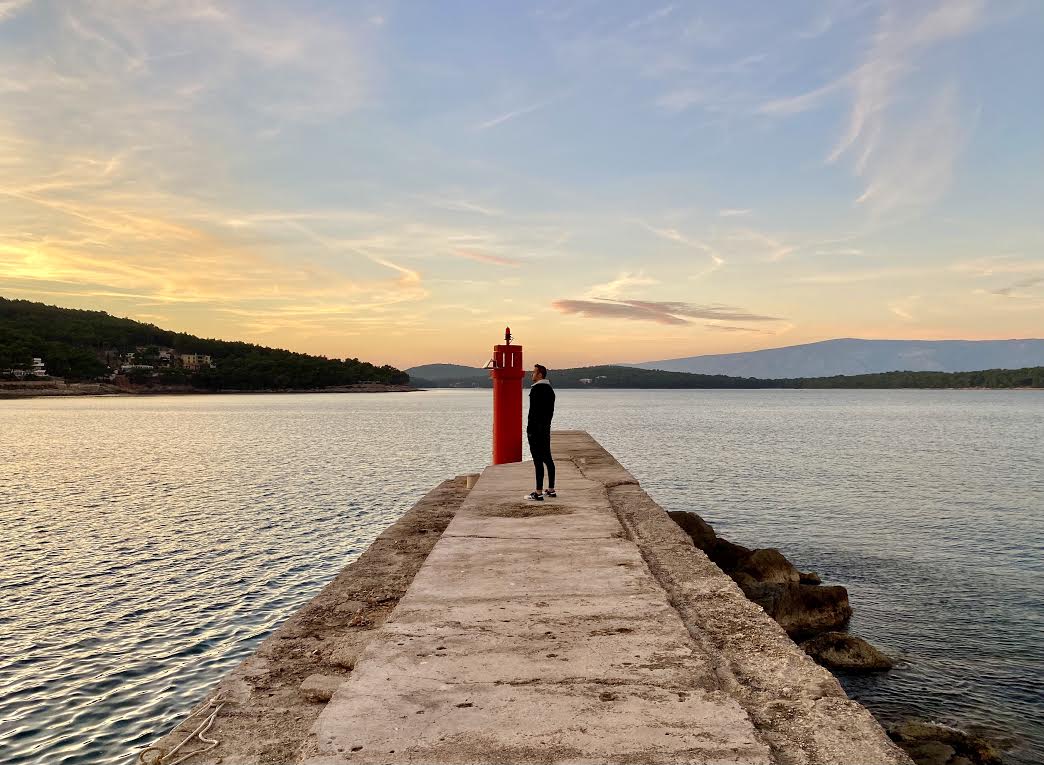
What’s important for a destination to offer to be compatible with a digital nomad lifestyle, apart from good WiFi?
This varies from person to person. We consider things that enable a good quality of life based on our priorities. Comfortable and affordable housing, ideally with a full kitchen and adequate desk space, is important. The beauty of the surroundings and access to nature is also a priority, at least for us. We’ve lived in busy cities, so one advantage of being a digital nomad is being able to live in serene and quieter places.
Being able to get around is important, so walkability is a plus. It’s also important to be able to find high quality food and have grocery stores nearby. Access to basic healthcare is also a consideration. Athletic facilities, such as a gym or soccer fields, are also pluses.
It’s easier to meet people and go about everyday life in places where English is spoken widely. Being able to connect with people is really important, so the presence of expat communities can be helpful, as well as the openness of the culture. We’ve had an extremely positive experience with Croatians in general - our friends and acquaintances have been so welcoming, friendly and willing to help us out with just about anything.
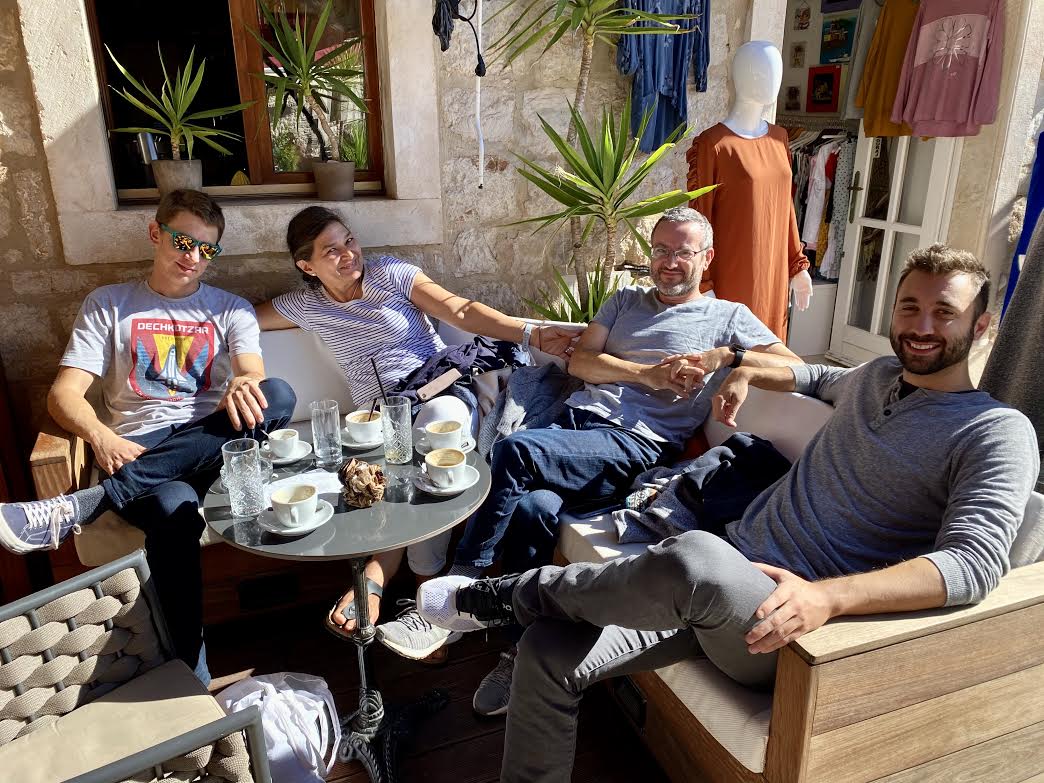
What’s your view on the future of remote work?
Remote and flexible work arrangements have been trending for the past decade or so, and Covid-19 has certainly expedited that trend. Many people have been encouraged to stay at home and non-remote companies have had to adapt quickly. As a result, I think it’s been eye-opening for workers and companies to see that, in fact, remote work can be productive and even beneficial for morale and results. Covid-19 is likely a forcing function for companies, as well as for individuals, to re-evaluate their work arrangements. Fully remote models may not work for everyone or every company, but I do think that flexible work arrangements will become the norm in some industries.
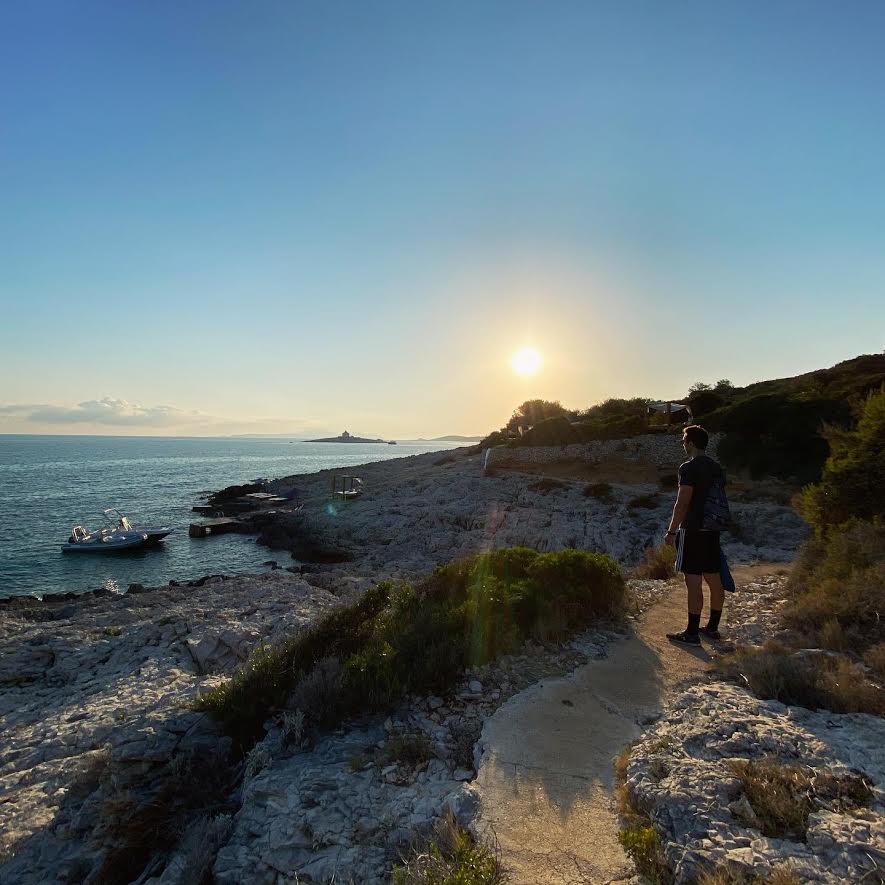
Do you have any advice for people looking to make the transition to digital nomad life?
Think about what you’re trying to optimize for and how different aspects of remote work do or don’t suit your lifestyle. If you’re relocating, research potential destinations before making the move. In order to be effective at your job and maintain good work/life balance, it’s important to be disciplined with your time and to set boundaries.
Most importantly - if remote work is something you want to do - just go for it! Companies are embracing remote work more now than ever. It may take some persistence to find a new role or company, or to negotiate with your current employer (which might be you!). Most decisions aren’t permanent - if it doesn’t work out, you can always go back to what you’re doing now. The grass isn’t always greener on the other side, but you won’t know until you take that leap.

To learn more about Croatia for the digital nomad, check out the Total Croatia Digital Nomad guide.
To follow the latest news about digital nomads in Croatia, follow the dedicated TCN section.
Are you a digital nomad in Croatia who would like to be featured in this series? Please contact us on This email address is being protected from spambots. You need JavaScript enabled to view it. Subject Nomad
Learning Croatian: Did the English Language Originate from Hvar Dialect?
December 17, 2020 - Continuing our alternative look at the Croatian language with linguisitic colossus Professor Frank John Dubokovich, is the English language actually derived from Hvar dialect?
One of the most popular features in the early years of Total Hvar, the precursor to TCN, was an impromptu language series I recorded with my good friend, Frank John Dubokovich, with whom I would share a late morning cold one each day on the square in Jelsa.
Frankie, of Jelsa stock but born and raised in New Zealand until his family moved back to Hvar when he was 8, is trilingual, although there is a case for saying not all of his language is understandable. He is fluent in English, Croatian and the very unique Hvar dialect. And it was his expertise in Hvar dialect that catapulted him first to a national televsion audience, and then to an international one, as he gave Croatian language lessons - at least his version of Croatia - to participants of a British reality TV show.
Professor Frank John Dubokovich, Guardian of the Hvar Dialects, as he quickly became known, was an Internet hit, with more than 50,000 views on his iconic Dalmatian grunt, before YouTube removed my channel for some reason.
Thankfully, I came across some offline versions of some of the Professor's teachings recently, and TCN is gradually reintroducing these linguistic treasures to the online world.
Today's lesson shows the depth of the Professor's intellect and capacity for detailed research. After toying around with his Hvar dialect, the Professor noted a number of similiarities between Hvar dialect and the English language. He enlisted the assisted of Jelsa Mayor, Niksa Peronja, to present his findings to his faithful audience. You can see the results in the video above - conclusive stuff.
The only thing left to explore is the following conundrum. Were English speakers the first inhabitants of Hvar, or is Hvar dialect actually the birth of the Croatian language?
You can see more of the Professor's linguistic genious on the TCN Talks YouTube channel.
Hvar Dining in COVID Times: Restaurants Offering Takeaways in December 2020
December 15, 2020 - Restaurants may be closed in Croatia, but takeaways are allowed, but who is working? A guide to Hvar dining in COVID times in December, 2020.
One of the things that used to drive me nuts when I lived on Hvar was trying to find out which restaurants were open in the winter.
There was no centralised place of information, and nobody ever seemed to know the complete list.
In these more challenging times, of course, all restaurants in Croatia are currently closed. But the takeway option is available. The thing is, if it was almost impossible to get a list of restaurants open in a normal winter, what hope of finding a list of Hvar dining options in this craziest of years?
Help is at hand...
A very nice initiative from Hvar resident and erstwhile TCN correspondent, Zdravko Podolski, on the Expats on Hvar Facebook page, asking the community to contribute their knowledge of restaurants who are open for take outs.
There was a good response. Over to Zdravko...
Places open for carryouts on the island - what we know so far
Always best to call first to confirm they are indeed open
GDINJ:
Kastel - on the main road - call ahead 099 3269 677
HVAR:
Bumbar pizza delivery, weekends only +385 21 741 430
Hotel Park Restaurant - Tel: +385 21 718 337 / +385 21 741 149
Mizarola - 098 799 978
JELSA:
NEW Restaurant Kalina Fri/Sat/Sun 1700-2200; 0955962499
Step Up Tue-Sun 1700-2200, 095 790 5726
Konoba Gajeta - opposite Ribola - 091 954 5588
CLOSED Restaurant Pizzeria Jelsa - main sq
STARI GRAD:
Albatros - sat/sun lunch / dinner +385 91 9799 535
Pizzeria Marko 12-14 / 17-20 - 021 765 889
Kod Damira - +385 91 5736 376
VRBANJ:
Konoba Bogo, Vrbanj but only on Saturdays and Sundays, dinner time from 17:00 till 22:00. Tel numbers are 021-768 337, 0917914285.
If there are any errors or additions to this list, please send to This email address is being protected from spambots. You need JavaScript enabled to view it. Subject Hvar Dining and we will update the list.
And if any other destination wants to put a similar list together as a public service, TCN would be happy to publish. Please email the same address.
For more news from Hvar, follow the dedicated TCN section.
Learning Croatian: How to Speak Dalmatian Using Only Vowels
December 11, 2020 - How hard is the Croatian language really? Perhaps it depends a little on your teacher - here is how to speak Dalmatian using only vowels.
Anyone who has spent an extended amount of time in Dalmatia, particularly out of season, will be familiar with the Dalmatian Grunt. It is a gruff form of greeting, which can sound quite threatening, but is actually a very friendly and informal way of locals greeting each other.
In all my years in Dalmatia, never did I find a finer exponent of the Dalmatian Grunt than Frank John Dubokovich in Jelsa on Hvar. In fact, listening to Frankie speak Dalmatian was an exercise in anthropology - what the hell was he saying, and did anyone have a clue what he was saying (I certainly didn't).
The grunt gave me an idea several years ago - to start a YouTube guide in how to speak Dalmatian, Hvar-style. It was a small project without any planning, but as longterm readers of TCN (and Total Hvar before that) may recall, the series got off to a flying start with Lesson One, above, the Dalmatian Grunt, amassing over 50,000 views on YouTube before my channel was removed for some reason. Frankie became known as Professor Frank John Dubokovich, Guardian of the Hvar Dialects, and his unique teaching methods had him appear on both national and international television after a British TV reality show commissioned him to teach its contestants in Croatia.
With the loss of the YouTube channel, I feared that the videos were lost forever, but I have managed to salvage many of them and so am in the process of republishing them once more, several years later.
Grunting of course is just a small part of the sophisticated Dalmatian language arsenal. What is even more impressive is how locals can use vowels to such incredible effect to convey meaning. So much so, in fact, that one wonders at times if one needs consonants to speak Dalmatian at all.
In our latest episode, The Professor hopped on the catamaran to visit me in Split, where he gave a masterclass in how to speak Dalmatian using only vowels, over a coffee (or perhaps something stronger) at Brasserie on 7 on the Split waterfront.
Nothing I have heard in any language comes close to the linguistic genius contained in the Dalmatian phrase, A e!
Not convinced by The Professor's methods? Here are 25 common mistakes foreigners make when speaking Croatian, as compiled from Cro2Go's Mihaela Sego.
From Hvar to Tanzania: Young Croatian Volunteers to Help Poor Children
December 5, 2020 – As Croatia counts a record number of coronavirus cases every day, young Croatian Romano Malečić decided to set out on a big journey from Hvar to Tanzania to volunteer as a teacher. On the occasion of the International Volunteer Day which is celebrated today, here is his story from 9000 kilometers away.
While his peers from Hvar were enrolling in college, 19-year-old Romano Malečić had different dreams. In Croatia, taking a gap-year is not as common as in other countries, but Romano decided to do just that – take a break for a year or two after high school and try volunteering in Africa.
"I knew that after graduating from high school I didn't want to enroll in college right away, because I just wouldn't be ready. All this was inconceivable and ridiculous to me, that at the age of 18 when I was just beginning to define and develop as a person, I have to make one of the most important decisions in my life – what college to enroll in or what to do for the vast majority of my life," said Romano honestly, who did not give in even under pressure from the professors to enroll in any college, just to study something.
A last-minute, but firm decision
At no cost did he want to go the standard way to enroll in college after graduating from high school, find a job in the profession after graduation, start a family, and not experience anything interesting in life. For this reason, the choice to pause the year for Roman was quite logical, no matter how hard it was for the people around him.
He says that while making the decisions, he always "goes with the flow", so he made his decision to go to Africa at the last minute, and he planned and realized the whole trip in just one week.

The pandemic did not frighten him at all. Watching European countries close again and tighten epidemiological measures, he looked for a place where he could escape. When he learned that Tanzania was open without any restrictions, and since it had always been his dream to volunteer in that very African country, the question was – now or never.
He bought a plane ticket to Dar es Salaam, the capital of Tanzania, on Wednesday, October 28, told his parents about his decision on Thursday, and took off on Sunday, November 1. Like any worried parent, Roman’s parents initially disapproved of his idea of going to Africa in the middle of a pandemic. However, they tried to understand his decision and eventually let him develop and grow, follow his dreams, regardless of the fear and pressure of society, for what is Romano infinitely grateful to them.
'Children here are honest and happy'
Before the flight, he had to be vaccinated against hepatitis A, typhoid fever, and yellow fever. The trip to Arusha, his destination where he is currently located, took a full 3 days. From Hvar, he first went to Vienna, from where he had a flight via Istanbul to Dar es Salaam, the capital of Tanzania. Upon arrival in Tanzania, he stayed in Dar and finally, after a few days, set off on a 15-hour bus ride to his last stop – Arusha.
"Intensive preparations started only 4 days before the trip, on the day I bought the plane ticket. I didn't know much, except that I'm going, and I planned most of it along the way (except vaccinations), including the volunteering. I decided to look for volunteering opportunities when I arrived in Tanzania," says Romano, not knowing that he would dare to go on such a trip.
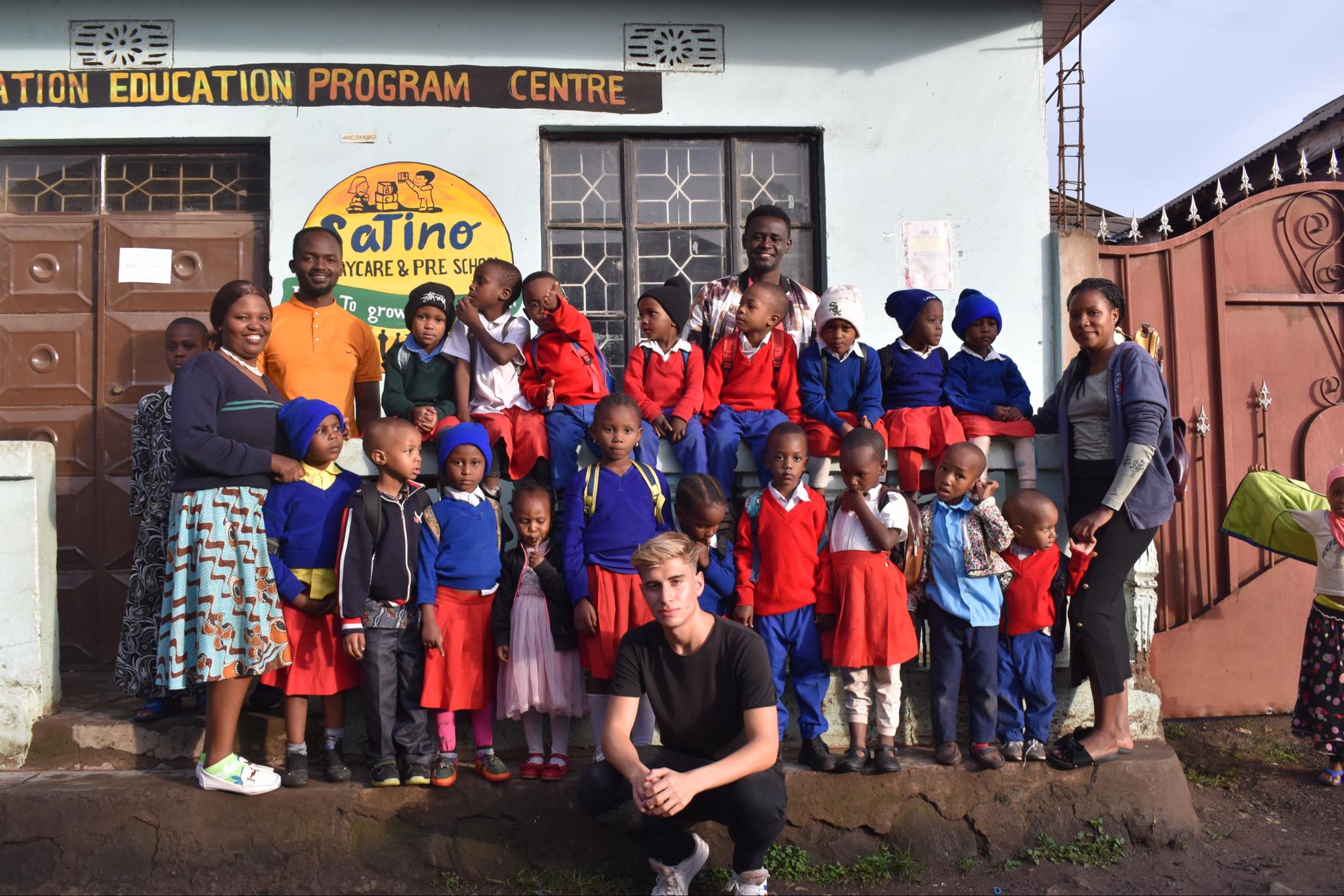
Romano found a volunteering project through the organization SATINO (Save and Teach the Innocent). Now, he helps poor children and teaches them English and math. As he previously explained for Slobodna Dalmacija, employees and volunteers take care of 65 children aged three to six and 25 between the ages of 13 and 17 from seven in the morning until eight in the evening. They are not abandoned, but they come from low-income families and any help is welcome, especially since they have to set aside seven dollars each month for the organization in which Romano volunteers. For some, it is a ridiculous amount, but for these children and their families, it is very unattainable.
As he says, children in Tanzania differ from our children only in the living conditions in which they live.
"There are people who often say that I could have stayed and volunteered in Croatia, and I am aware that there are children in Croatia who also have a tough childhood, but these children depend on the help of others. The hygienic minimum is not met here because there is no soap or running water in the school, and to learn English, they depend on volunteers because there are not enough qualified teachers. They don't have much, they are poor, but honest and happy, because they are not aware that there may be something better out there for them," says Romano.
"They are most interested in white people or 'muzungu' as they often shout after you in passing, which means 'white man' or 'aimless wanderer'. Kids run after you trying to touch you, especially your hair, out of curiosity because you simply stand out whether you want to or not. Those looks, touches, and feats might be ‘too much’ for someone, and they were for me, especially in the beginning while I was still adjusting to a new environment, but when you get used to it and realize that most kids are well-meaning and just curious because they don’t see whites every day, you get used to it. And they love it when you carry them.
He constantly tells African children stories about Croatia, especially about his native Hvar, but also about Dalmatia, food, and fish. The indispensable topic of conversation is, of course, football and Luka Modrić, their great football idol.
This is what his average day of volunteering in Africa looks like:
"From Monday to Friday, I'm already in school at about 8 am because my first class is from 8:30 am to 10:30 am. I'm teaching preschool children, from 3 to 6 years old, 25 of them. Depending on the day, with the help of educator Jackline, we teach them either Swahili, or English, or math. Mostly it’s the basics, numbers, and letters.
After the preschool education and breakfast (fried bananas or ‘ndizi za kukaanga’ as they say here), from 11 am to 1 pm I have a second lesson, English, to prepare 24 children for the high school, what I run on my own.
Around 2 pm, we have lunch together with the children. Most often it is either rice, polenta, bananas, or beans, ie carbohydrates because they are the cheapest. After lunch, the kids go to bed, and we always have some work in between, cleaning, or correcting their exercises and tests," says Romano.
Around 5, when the children wake up, they play and dance until 8 when the parents pick up their children.
After a long day of teaching and playing with the kids, Romano goes home. If it’s Thursday, Friday, or Saturday, then he goes to the club and even to African weddings, where he’s been twice already.
Tanzania is fighting the pandemic in its own way. Their president, after testing watermelon, papaya, and goat on COVID-19, and after testing them "positive," declared the coronavirus pandemic a scam. In Tanzania, therefore, there are currently no restrictions or social distancing, and Romano says he has not seen a single face mask in this one month.
Romano believes that "if an African country can cope with a pandemic, the highly developed West can definitely do too." At the moment, everything is open in Tanzania, cafes, restaurants, and clubs, and people live normally.
'I want to help and there is no going back'
Romano modestly admits that sometimes, despite all the variations of bananas and rice, he misses his mother's food. But he doesn't want to split hairs, because, during his one-month stay in Tanzania, he saw things that, he says, opened his eyes and he could not remain indifferent to the unspoiled smiles of children.
"Behind those smiles, unfortunately, lies a difficult reality that these children are not aware of because they do not even know that there is something better somewhere. As I was lecturing, I saw the materials they use for learning, worn-out pencils taped with duct tape, one eraser for 20 children, torn and printed notebooks, crumbling backpacks, and clothes and shoes not to mention. I will only tell you that uniforms are worn to conceal their clothing and thus to mask material inequality," says Romano, who was therefore encouraged to launch a charity action to collect donations for children's necessities, but also the renovation of their school building.
Namely, the space they are currently using is rented, so it is expensive and unsustainable. They started building their own school building 3 years ago, but construction was suspended due to insufficient material resources.
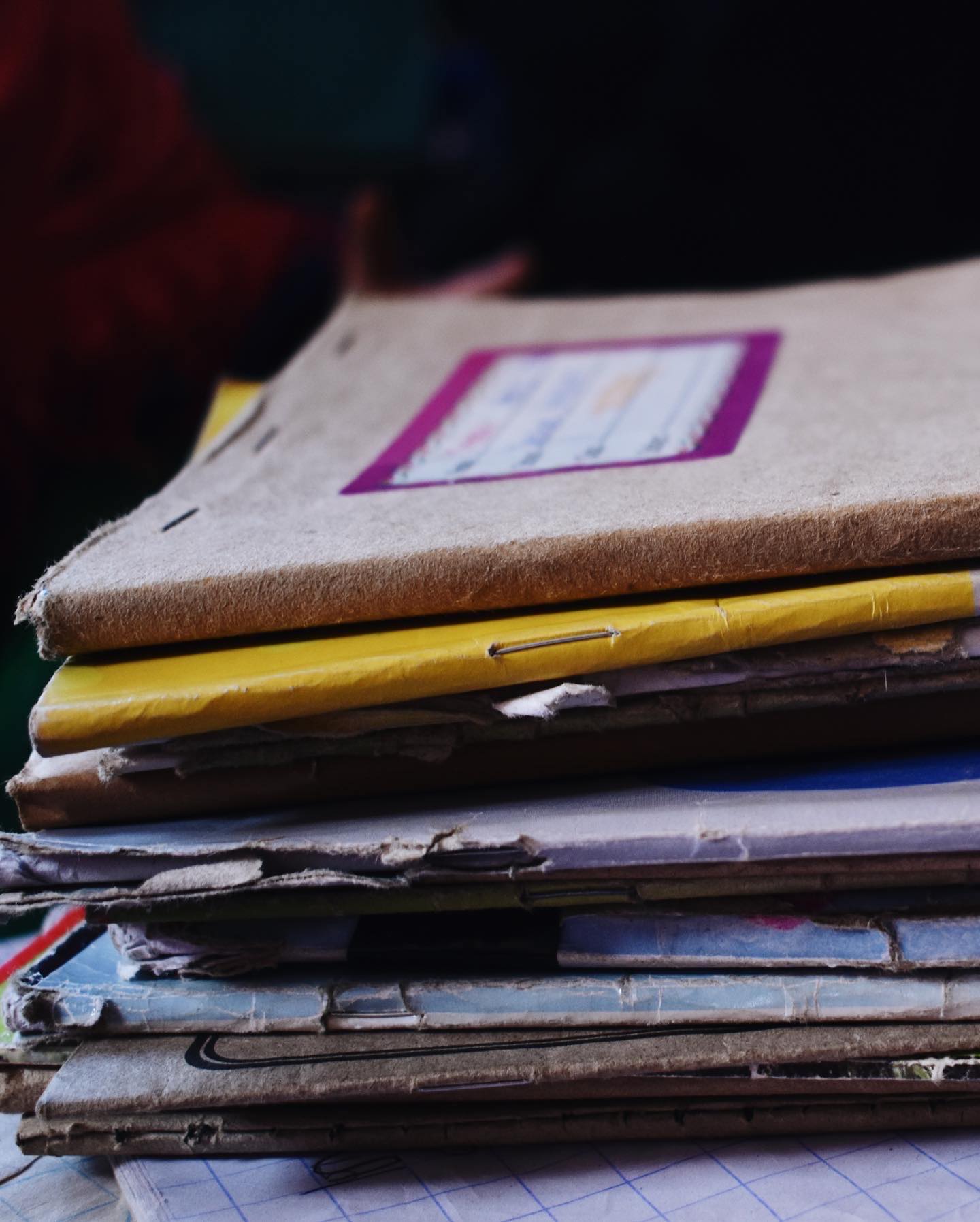
"I think that every child has the right to the basics, including education. It is the only chance for them, I think, the only way out that from this sadly corrupt system that has no interest in the people of this beautiful but massively exploited continent living as befits the 21st century. Education is something that no one can take away from them, it is 'the most powerful tool for changing the world', as Nelson Mandela would say," says Romano. It is for this reason that he wants to help these little ones, 65 of them, on whose future we can influence.
The school building in the making
"Even though I was aware of it before, I realized how privileged I am in life just because I was born a little further north, on another continent. I learned to appreciate more what I have and manage without the basics (running water, shower, toilet), and I also perfected hand washing. As a result, I met a different culture, tested my limits, and looked at things from a different perspective – a gratitude perspective," concludes Romano, hoping that little by little, both he and other volunteers will contribute to positive change through their work.
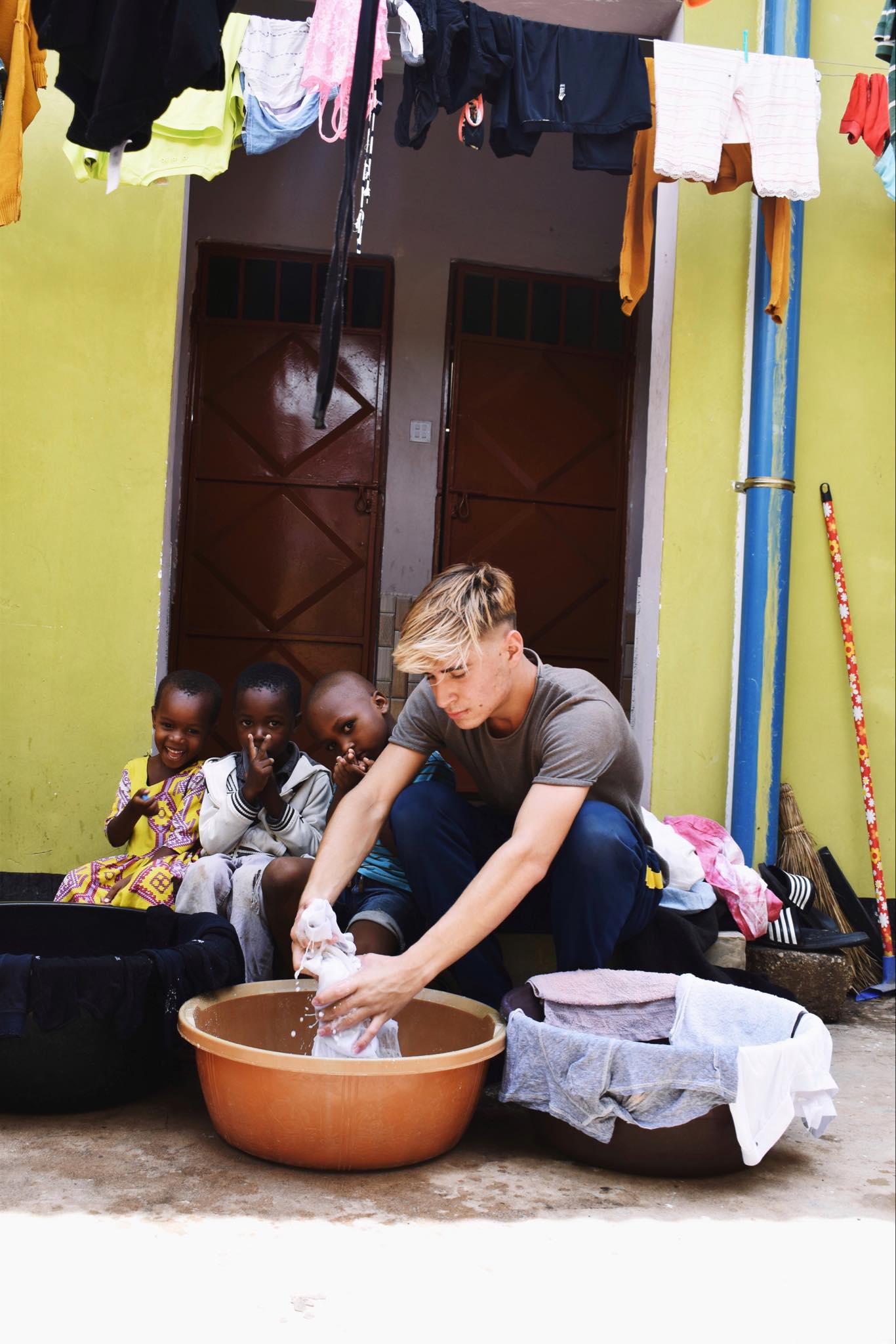
Before Tanzania, he had no previous volunteer experience, but, by all accounts, this is certainly not his last volunteering project in the world. Romano jokingly says he'll come back when the clubs re-open in Europe, but since it is not possible to plan much in advance at the moment, he will go "one step at a time" and plan to return to Hvar along the way.
Romano collects donations for children to buy them school materials, food, and hygiene supplies. If you also want to help, you can make a payment to his account: HR5223400093234047872.
He also launched a fundraising campaign to build a new school building, where you can also help with your donation.
All photos are from Romano Malečić's private archive.
For the latest travel info, bookmark our main travel info article, which is updated daily.
Read the Croatian Travel Update in your language - now available in 24 languages.
Learning Croatian: Comparing Kiwi Croatian to Hvar Dialects with Professor Frank John Dubokovich
December 4, 2020 - Croatian has a reputation for being a difficult language to learn. It doesn't have to be, you just need the right teacher or dialect. A look at Kiwi Croatian compared to Hvar dialect.
One of my favourite all-time interviews on TCN was with the two fabulous Aussie Croat ladies behind Zinfandel, Brasserie on 7, Split Hostel and Charlie's Bar. Apart from documenting Korana and Maria's phenomenal story over the past almost 20 years in Split (which you can read here), one thing I remember about the interview was asking if they spoke Croatian before they moved to Croatia.
"We thought we did," they answered simultaneously, before bursting into laughter.
I can imagine how shocked they must have been at the difference in Croatian spoken back in the Homeland compared to what they were exposed to back home. Over the years, I have spoken to many people from the Croatian diaspora. Some speak better Croatian than the majority here, others have just a few words, and the majority are somewhere in between. As such, there are different levels of Croatianness in the language spoken.
I became aware of this first several years ago when I was recording our very popular YouTube series, Learning Croatian with the Guardian of the Hvar Dialects, Professor Frank John Dubokovich.
The series became an instant hit after the first impromptu episode. As I explained last week, The Professor's iconic Dalmatian Grunt was watched over 50,000 times before YouTube removed the channel for reasons I can't figure out. Having found some of the lessons on the original camera recently, I am starting to repost them again - here is the article on the first - and the best - lesson of all.
The Professor was born in New Zealand, where he lived for 8 years before his family moved back to Hvar. During the summer, he has several Kiwi visitors from his younger days, and The Professor suggested a lesson with his schoolfriend Michael, who is proficient in Kiwi Croatian.
A great lesson with Michael on Kiwi Croatian, Vivian in standard Croatian and The Professor in his inimitable Hvar dialects on important topics such as fishing, cooking, getting married, getting a job, and taking the kids for a walk.
I think even I could master this Kiwi Croatian version. Perhaps there is hope.
Learning Croatian? Here are 25 common mistakes foreign students make, and how to fix them.
Learning Croatian with the Professor of Hvar Dialects: Lesson 1 - The Dalmatian Grunt
November 28, 2020 - Learning Croatian is very easy if you have the right teacher. And it doesn't come any easier than Lesson 1 - the Dalmatian Grunt.
Just over nine years ago, a few weeks after I started the Total Hvar blog which was the founding digital stone of TCN, I was having a coffee with my good friend, Frank John Dubokovich, at the Total Hvar HQ at Cafe Splendid on the main square of Jelsa on the island of Hvar.
It was November, the square was quiet, and a long Dalmatian winter was ahead of us, somewhat devoid of entertainment. Frankie had his video camera with him for some reason, and I suggested that we record a Croatian language series over the winter, with him as the Croatian language professor, to alleviate some of the boredom.
An impromptu idea, which we decided to start that very moment, with no planning whatsoever, and with only one rule - there would only be one recording for each lesson. The pressure was on to get it right first time. What happened next was hilarious.
The first lesson in the series was called The Dalmatian Grunt. Like every other lesson in the series, it was almost totally unplanned but it became an instant YouTube hit, amassing more than 50,000 views all over the world before YouTube removed my channel a few years ago for reasons I am still trying to ascertain. As the camera started rolling, I had no idea even what I was going to ask, but within seconds, a new Internet star was born - Professor Frank John Dubokovich, Guardian of the Hvar Dialects.
His perfect rendition of the Dalmatian Grunt brought an army of adoring new followers (mostly female for some reason), and many more were attracted by his fantastic teaching methods which made Croatian look incredibly easy to learn. Check out the iconic first lesson above.
The Professor's fame spread, and it was not long before famous people were flying halfway across the world for the chance to have a 'kava' with The Professor, including then assistant coach of the Australian football national team, Ante Milicic, who even had The Professor's dulcet tones on his morning wake up call, as Ante explained in the video above.
Ante's adoring fan dash across the globe even made the national media, in an age where I was better known as Tom Bradbury...
As The Professor's fame spread, especially that iconic Dalmatian Grunt, I was fielding media requests for appearances on national television. And then international television came calling, and The Professor agreed to share his colossal linguistic ability with a British TV reality show visiting Croatia, schooling them in the art of the Dalmatian Grunt. As you can see above, they were excellent students.
As luck would have it, the original video recording of The Professor's first lesson was not lost once YouTube deleted the channel, and I found it on the original camera earlier this year. It has just been reuploaded to YouTube once more (see above), so that a new generation can appreciate The Professor's linguisitc genius.
I am looking forward to the comments again. Last time, there were so many from all over the world in the Croatian diaspora. "This is hilarious and just how my Uncle Branko speaks here in Melbourne, even though he left Hvar 60 years ago."
We will be uploading more of the once-deleted videos to our TCN Talks YouTube channel if you want to subscribe for the latest.
The Rise of the Quality Hotel Scene in Stari Grad on Hvar
November 21, 2020 - Often overlooked by its more fashionable neighbour on the western tip of the island, the luxury hotel story in Stari Grad on Hvar is developing nicely, with or without Four Seasons.
When I bought my house in Jelsa back in 2002, the island of Hvar was very different. It was only seven years after the Homeland War had finished, and tourism was only just beginning to recover. Nowhere was this more true than in the hotel industry. With almost no tourists during the war, some of the hotels were used to house refugees and internally displaced people from parts of Croatia and Bosnia which were badly affected by the fighting. Some of those hotels have never recovered.
Back then, some 18 years ago, there were very few truly luxury places to stay on Hvar, despite its elite island reputation. It would be four more years until ORCO Group took over Suncani Hvar Hotels in Hvar Town and began to add the four and five-star luxury that one can enjoy today.
The hotels in central Hvar were not so fortunate with post-war investment. Soon after I moved to Jelsa, the town's hotels were sold to a Hungarian investor. At the time, there was much excitement about a new era for Jelsa tourism, with investments promised. Back in the 1980s, Jelsa was THE place to go on Hvar, with no less than four nightclubs, so I am told. It was named the best destination in former Yugoslavia in 1983 (from memory), and its hotels very popular.

Sadly, the expected investment did not materialise, the oldest hotel on Hvar, Jadran (which opened in 2011) closed, and the town has been stuck in tourism limbo every since with its 2 and 3-star hotels.
It was a similar story initially in both Vrboska and Stari Grad, both of which have moved onto a path of better fortune.

In Vrboska, the old two-star Hotel Adriatic was not even available for tourist rental for many years, as the hotel had a contract with the Czech government to host its sick children, who enjoyed the healthy Hvar climate and pristine Adriatic waters. That all changed back in 2016 with a 30 million euro investment, as Hotel Adriatic was transformed into the 4-star standard Senses Resort.
But by far the most interesting story has been taking place in Stari Grad over the last decade. A story which continues to write new chapters and is quietly becoming a quality destination which offers significant competition to Hvar Town. I wasn't in the least surprised, for example, to learn that the first Michelin-recommended restaurant on the island (Apolon) was in Stari Grad, not Hvar Town.
And it is with Apolon where - at least from my perspective - the rise of the hotel scene in Stari Grad began.
Back in 2013, as Croatia prepared to join the EU, I took a journalist from The Independent to meet Jelsa winemaker Andro Tomic. Tomic at the time was the poster child of EU accession, due to the Italian objections in the 'prosek v prosecco' debate. After the interview and accompanying wine tasting, Tomic suggested we go for lunch at a great new place that had just opened in Stari Grad. As the island blogger, I was intrigued as I had never heard of it.
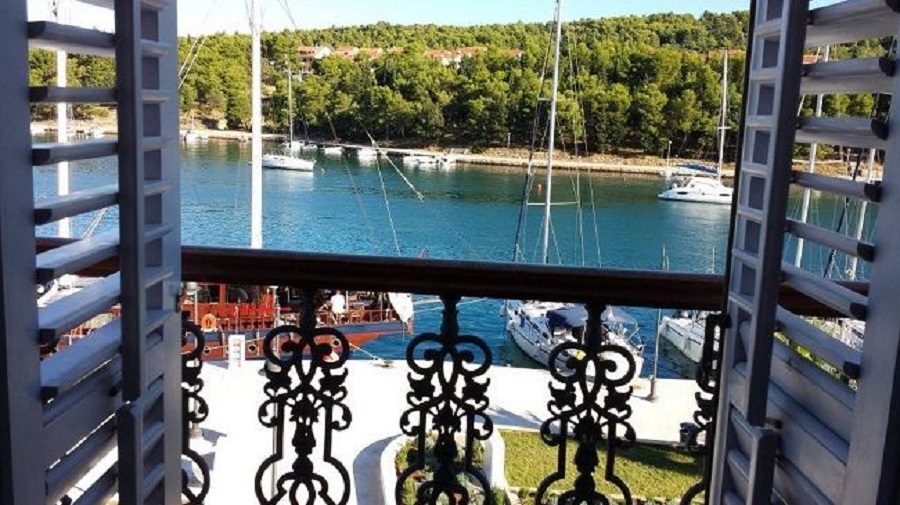
(Apolon in 2013)
Restaurant Apolon and the 7 luxury rooms in a historic building at the top of the expanded Stari Grad riva were a statement of intent from owner Tonci Tadic, with no expense spared to open the first four-star luxury accommodation in Stari Grad. It was an instant success, with many higher-paying guests choosing the peace and quiet of the Stari Grad waterfront, as Hvar Town went through its experiment with party tourism. Stari Grad finally had an alternative for those looking for a great place to stay and eat in the oldest settlement on the island.
Stari Grad's main hotels, the Helios Group, were in a similar situation as Jelsa. Two and three-star, trying to recover from the war, and deprived of investment and with significant ownership issues. The lack of quality hotels was holding the destination back from development.
And then, slowly, things changed for the better.

(Brizenica Bay, Four Seasons Hvar plan back in 2016)
Ironically, the biggest move towards luxury hotel tourism in Stari Grad on Hvar is the one which is looking increasingly less likely ot happen - the Four Seasons Resort at Brizenica Bay a short walk north of the town. If the 140 million euro investment were to go ahead, it would be one of the most luxurious hotel resorts on the entire Adriatic coast. Despite former Minister of Tourism Gari Cappelli announcing that the resort would be expecting guests for the 2019 season, the project is still waiting for its building permit. But while the Four Seasons may be on hold, there is plenty of other tourism good news for the hotel industry in Stari Grad.
Perhaps the most significant in the long term is the new ownership of the flagship hotels from Helios Group. They have been taken over by Valamar Hotels, the first investment on Hvar from the influential Croatian company which is a dominant player in the hotel industry here. The plans are in place, and the news is good - a complete overhaul of the existing hotels towards a four-star offer more in keeping with the quality of the destination. The renovations will take a couple of years, but once completed, the spectacular position of Hotel Arkada in particular should be a very popular spot for those wanting to combine a beach holiday with a relaxed setting.

(Photo credit - Hotel Antica)
But there is more happening in the higher quality hotel story in Stari Grad. With a much lower profile, another 4-star hotel opened back in 2018, close to the ferry, as we reported at the time - Hotel Antica.
And 2020 took the Stari Grad hotel offer to new heights, despite the attentions of the pandemic. While the Four Seasons project was arguing building permits with the town council, across the harbour on the other side of the ferry, one project was doing everything right - Maslina Resort in Maslinica Bay, the first five-star hotel for Stari Grad. Indeed, it is only the fourth 5-star hotel on a Croatian island (excluding the very small boutigue hotels), the others being on Losinj, and Palace Elisabeth heritage hvar hotel, which was the first 5-star hotel to open on Hvar last year.
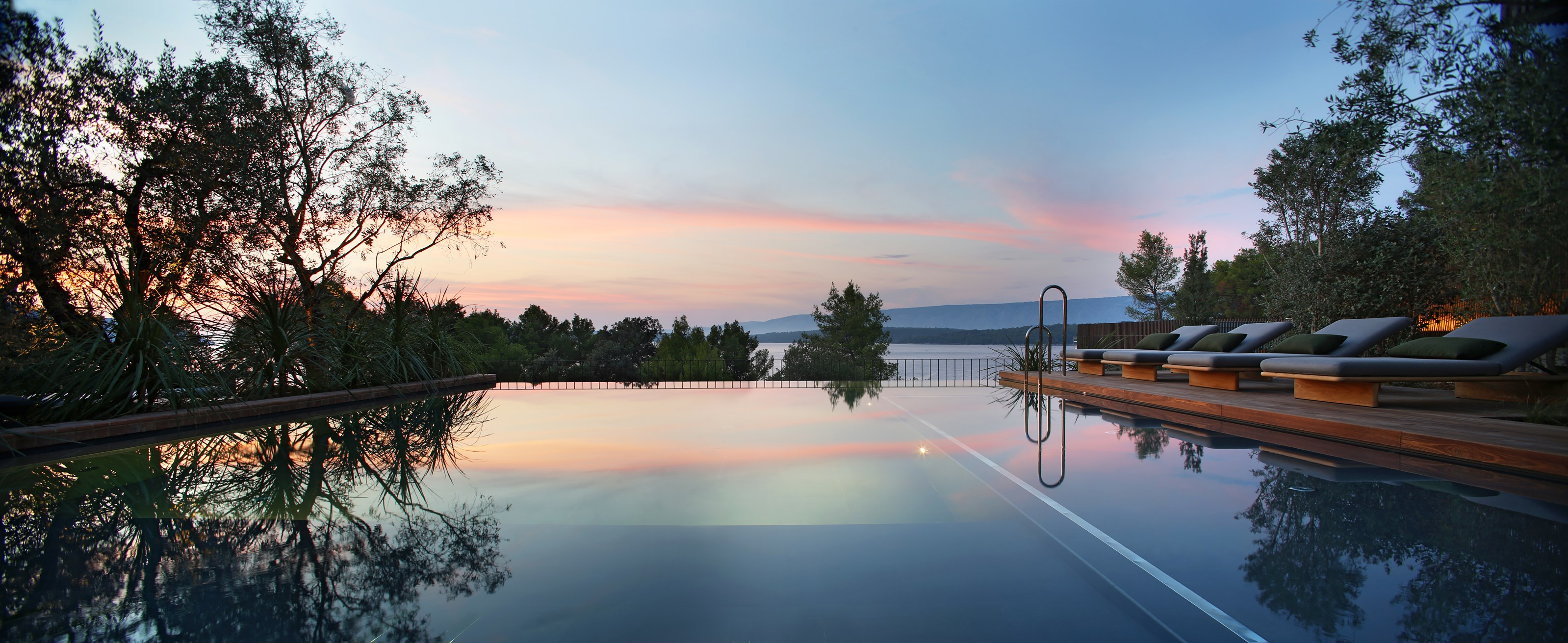
(Photo credit - Maslina Resort)
With its signature motto, Mindful Luxury, Maslina will be looking to set the standards of hotel luxury not only on Hvar, but also the Adriatic, when it opens for its first full season next year. You can check it out here.
It is just 7 years since Apolon opened in Stari Grad, bringing four-star excellence to the town. Valamar, Antica, Maslina, as well as a host of higher-quality private accommodation options in the historic old town and villas overlooking the sea, are helping to life the tourism offer of what was once the capital of this beautiful island.
I predict good things for Stari Grad's future - a safe, authentic lifestyle destination which is developing tourism as it should be.
Follow the latest from the island of Hvar in our dedicated Hvar section.
Hvar Among the Top Honeymoon Destinations to Look Forward in 2021
November 19, 2020 – The famous Croatian island receives another recognition as the wedding blog Boho Weddings lists Hvar among the top honeymoon destinations on the Mediterranean.
This year has taught us many lessons, and the most important of them is that life can sometimes be very unpredictable. The tourism sector and the event industry have been hit hardest by the coronavirus pandemic, which is why many trips and events have had to be either canceled or postponed for the next year. Among them, of course, were weddings and honeymoons, which should be the happiest and most exciting events for all couples in love. But this year, weddings and honeymoons are some of the biggest challenges faced by both couples and their organizers.
However, with the arrival of the coronavirus vaccine on the horizon, there is hope that from the next year, we can again organize wedding celebrations in the most desirable places in the world. There is also hope that popular honeymoon trips won't lag either.
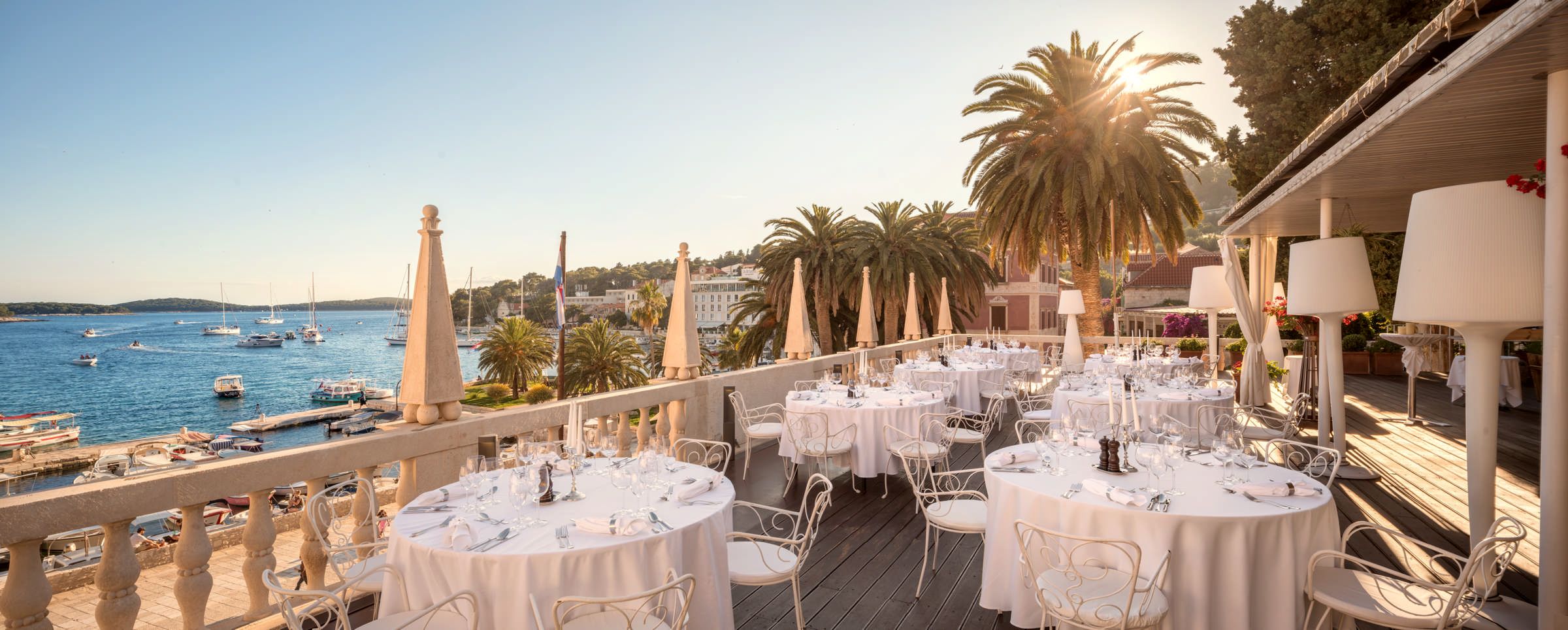
Hvar town is a popular wedding and honeymoon destination / Copyright Romulić and Stojčić
The Croatian island of Hvar has often been characterized as one of the most romantic places in the world, where every summer (not counting the summer of 2020) many couples say their fateful "yes", or just choose it for their honeymoon destination after tying the knot. It seems like this sunniest island in Europe has it all – a romantic atmosphere, perfect sunsets, beautiful landscape, clear sea, rich cultural heritage, lavender fields, great wine, and delicious food.
The beauty and attractiveness of Hvar have been recognized by the wedding experts from the leading UK wedding blog named Boho Weddings, who listed Hvar among the top honeymoon destinations that we'll be looking forward to in 2021, in the company of other famous Mediterranean pearls – Greek Santorini, Spanish Ibiza, Italian Sardinia, and Malta.

Hvar town / Romulić and Stojčić
The Boho Weddings reports:
"Swarming with opulent hotels and expensive restaurants, the Croatian island of Hvar has a longstanding reputation for glitz and glamor. Here, well-heeled holidaymakers, posh partygoers, and A-list celebrities gather in classy beach bars for legendary nightlife. Remember, this is where Prince Harry earned his party boy notoriety.
But apart from the capital’s pizzaz, the island is host to countless wonders, from ancient villages to white cobblestone streets to picturesque squares to majestic cathedrals and hilltop fortresses. The northern coastal town of Stari Grad is home to a UNESCO Protected World Heritage Site, an agricultural landscape of sprawling lavender-clad fields, olive tree groves, and vineyards. If you venture down south, you will discover secluded pebble beaches fringed by sweet-smelling pine forests. Are you looking for the perfect private hideaway? Sail to the nearby Pakleni Islands to find sheltered sandy bays and remote coves that let you forget the rest of the world."
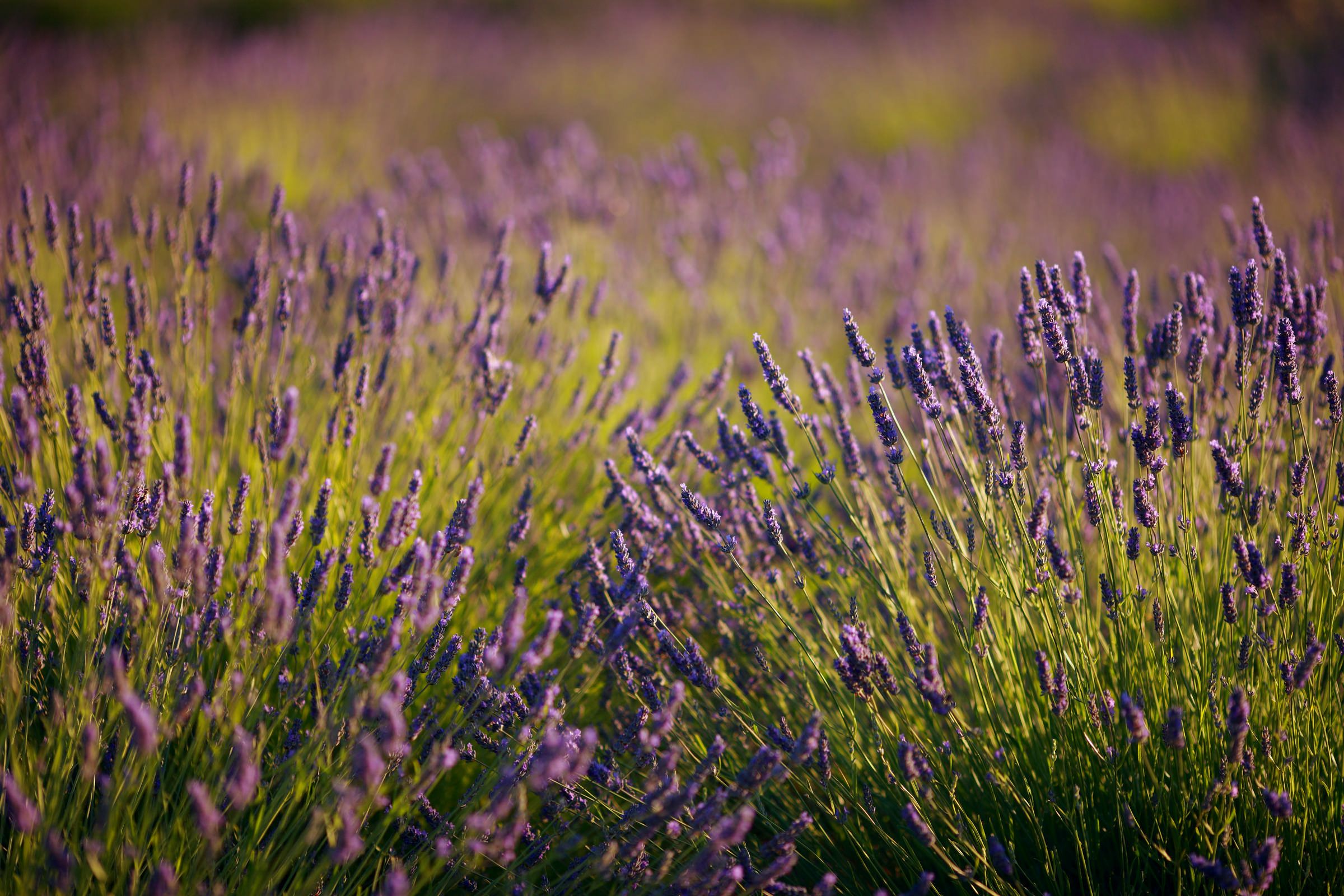
Lavender on Hvar / Romulić and Stojčić
No matter the situation with the pandemic, one can always dream about their perfect wedding destination and look forward to their honeymoon trip, whether it will happen next year or not. As Boho Weddings put it, "these honeymoon ideas are the perfect place to put 2020 behind you and crack on with the rest of your married life."


